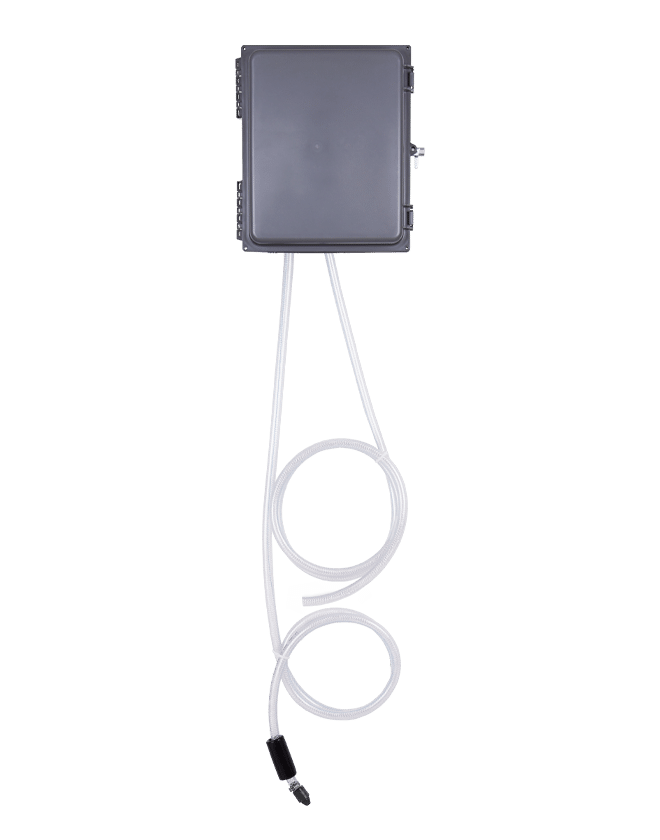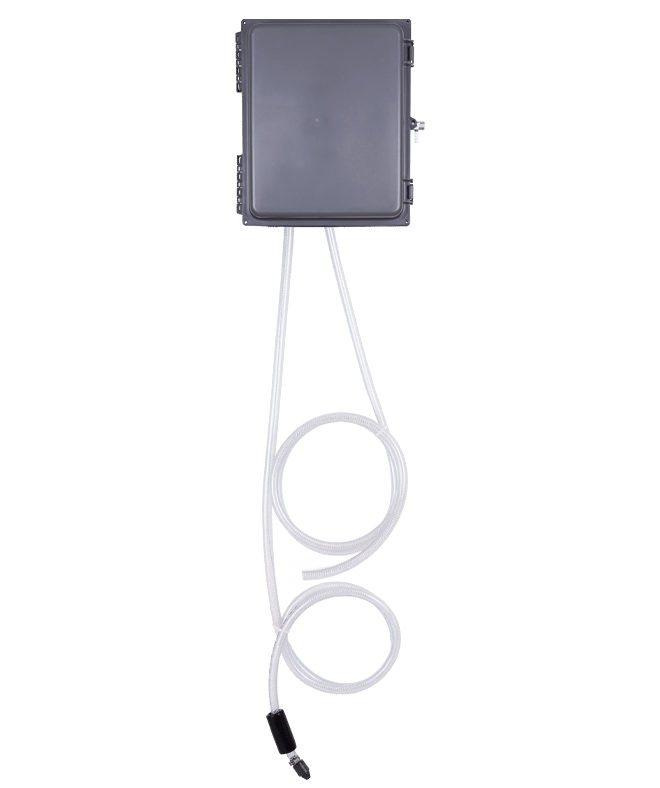Single Product Transfer Units
#CT UnitsWall mounted transfer box for pre-mix solutions or concentrate products, operated by using a manual air button or timer and solenoid valve.

Wall mounted transfer box for pre-mix solutions or concentrate products, operated by using a manual air button or timer and solenoid valve.
WITH TIMER AND SOLENOID VALVE: compressed air, electricity
WITH MANUAL AIR BUTTON: compressed air
one product
8 ft. (2.4 m) hose with 1/2 in. (12.7 mm) inside diameter
8 ft. (2.4 m) hose with 1/2 in. (12.7 mm) inside diameter
none
3.5 gal/min (13.2 l/min)
Santoprene, Viton, or Kalrez
WITH TIMER AND SOLENOID VALVE: single shot
WITH MANUAL AIR BUTTON: none
*dilution rates and flow rates given are based on chemical with viscosity of water and factory air pressure settings.
air regulator (R25) factory set at 50 psi (3.4 bar). Operating range is 40 to 80 psi (3 to 5 bar) with 2 CFM (56.6 l/min)
40-100˚F (4.4-37˚C)
WITH TIMER AND SOLENOID VALVE: 120 VAC at 60 Hz, 2 amps (GFCI protected outlet)
WITH MANUAL AIR BUTTON: none
WITH TIMER AND SOLENOID VALVE: 120 VAC
WITH MANUAL AIR BUTTON: none
Chemical products used with this equipment must be formulated for this type of application and compatible with unit materials and pump seals. For more information on chemical compatibility, consult the manufacturer or SDS for your product.
| PUMP SEAL MATERIAL | OPERATING TYP | ||
|---|---|---|---|
| CT | Santoprene (1) | Manual Air Button (A) | 5 |
| Viton (2) | Timer and Solenoid Valve (D) | ||
| Kalrez (5) |
Add option codes to item number as shown. Examples:
Choose a pump seal material that is compatible with the chemicals you will use. Chemical incompatibility can cause accelerated wear and equipment failure that is not covered by warranty, so it’s important to do your research.

We have distributors all over the world. Tell us a little bit about you and your equipment needs, and we’ll help you find or become a distributor.
We can’t clean your inbox, but we can help keep it interesting. Stay in the know on products, improvements, and other news.